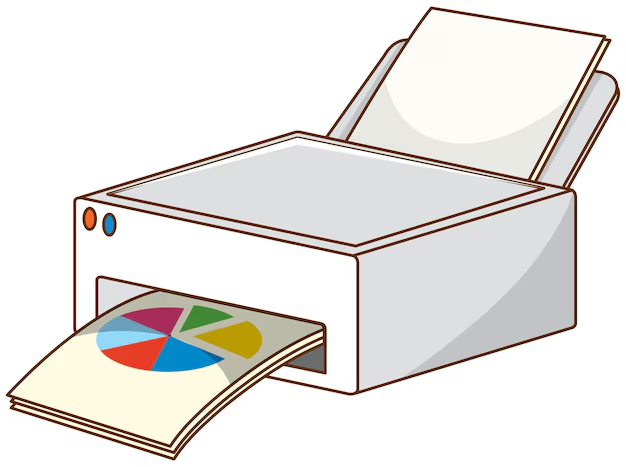Ph.D. in Drawing and Printing: Introduction, Admission, Registration, Eligibility, Duration, Fees, Syllabus 2024

Introduction:
The canvas is not merely a space for art but a realm where imagination meets expression. In the pursuit of artistic mastery, the Ph.D. in Drawing and Printing stands as a beacon, offering scholars the opportunity to delve deep into the nuances of visual creation. Let's embark on a journey to unveil the essence of this doctoral program.
Admission Process:
- Application Submission: Candidates typically submit their applications online, including academic transcripts, letters of recommendation, and a statement of purpose.
- Portfolio Review: Evaluation of the candidate's artistic portfolio, showcasing proficiency in drawing, printmaking techniques, and conceptual development.
- Research Proposal: Submission of a detailed research proposal outlining the intended focus of the doctoral research, artistic objectives, and methodological approach.
- Interview: Shortlisted candidates may be invited for an interview to discuss their portfolio, research proposal, and academic background.
- Academic Background: Applicants are required to hold a master's degree in Fine Arts, Visual Arts, or a related field, demonstrating a strong foundation in drawing and printing techniques.
Eligibility Criteria:
- Master's Degree: A prerequisite for admission, candidates must possess a master's degree from a recognized institution, with a focus on drawing, printmaking, or visual arts.
- Artistic Proficiency: Demonstrated proficiency in drawing and printing techniques, as evidenced by the quality of the applicant's portfolio and previous artistic accomplishments.
- Research Aptitude: Ability to articulate a clear research agenda and demonstrate an understanding of research methodologies relevant to the field of drawing and printing.
- Creative Vision: Applicants should showcase a strong conceptual and aesthetic vision, as well as the ability to critically engage with contemporary issues in art and culture.
- Language Proficiency: Proficiency in the language of instruction, usually English, is essential for international applicants.
Completion Time:
The completion time for a Ph.D. in Drawing and Printing varies depending on factors such as the nature of the research project, the candidate's progress, and program requirements. On average, students can expect to complete the program in four to six years.
Career Opportunities:
- Fine Artist: Pursue a career as a professional fine artist, exhibiting work in galleries, museums, and art institutions.
- Printmaker: Specialize in printmaking techniques such as etching, lithography, screenprinting, and relief printing, producing limited edition prints for sale or exhibition.
- Art Educator: Teach drawing and printing techniques at the university level or in community art programs, sharing expertise with aspiring artists.
- Curator: Curate exhibitions and art collections, working in museums, galleries, or cultural institutions to promote and preserve the work of contemporary artists.
- Art Director: Work in advertising, publishing, or design firms as an art director, overseeing the visual direction of projects and campaigns.
Syllabus:
- Advanced Drawing Techniques: Exploration of advanced drawing techniques such as figure drawing, landscape drawing, and experimental mark-making.
- Printmaking Processes: In-depth study of traditional and contemporary printmaking processes, including etching, lithography, screenprinting, and digital printing.
- Art Theory and Criticism: Critical examination of art theory and criticism, exploring key concepts and debates in contemporary art practice.
- Research Methodologies: Training in qualitative and quantitative research methods, including archival research, literature review, and visual analysis.
- Thesis Development: Guidance and support in developing a thesis that integrates artistic practice with scholarly inquiry, culminating in a significant body of work.
Internship Opportunities:
- Artist Residencies: Participate in artist residencies, providing dedicated time and space to focus on artistic practice and research in a supportive environment.
- Gallery Internships: Internships at galleries, museums, or art institutions, gaining hands-on experience in curation, exhibition design, and arts administration.
- Printmaking Studios: Internships at printmaking studios or workshops, working alongside master printers and artists to produce editions and experiment with printmaking techniques.
- Community Arts Programs: Internships with community arts organizations, facilitating art workshops, and projects for diverse populations.
- Research Collaborations: Collaborative projects with faculty members or research institutes, contributing to ongoing scholarly endeavors in the field of drawing and printing.
Scholarships and Grants:
- Merit-Based Scholarships: Awarded to students based on artistic excellence, academic achievement, and research potential.
- Research Grants: Funding opportunities provided by universities, art foundations, or government agencies to support doctoral research in drawing and printing.
- Artist Grants: Grants for individual artists, providing financial support for the creation of new work, research, or professional development.
- Residency Fellowships: Fellowships offered by artist residencies, providing stipends, studio space, and access to facilities for a designated period.
- Teaching Assistantships: Assistantship positions that offer tuition waivers and stipends in exchange for teaching or research-related responsibilities within the university.
FAQs:
Can I apply for a Ph.D. in Drawing and Printing with a background in a different artistic discipline?
While a background in drawing and printing is preferred, applicants with a strong artistic portfolio and relevant experience may still be considered for admission.
What is the expected format of the research proposal for the Ph.D. program?
The research proposal should outline the candidate's research topic, objectives, methodology, and significance to drawing and printing.
Are there opportunities for interdisciplinary study within the program?
Yes, the program encourages interdisciplinary dialogue and collaboration, allowing students to explore connections between drawing and printing and other artistic disciplines.
How does the program balance studio practice with academic research?
The program offers a balance of studio courses, seminars, and independent research, allowing students to integrate artistic practice with scholarly inquiry.
What support services are available for Ph.D. students in Drawing and Printing?
Universities typically offer a range of support services, including academic advising, studio facilities, research resources, and professional development opportunities.




